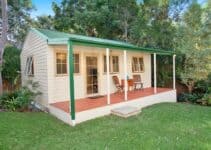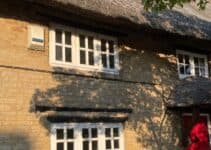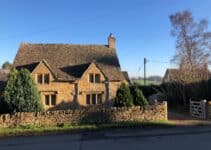When Kevin McCabe’s self-built cob house was on Grand Designs back in 2013, he admitted it cost over his £350,000 budget. But then his house was vast – ‘mansion-sized’ is how he described it himself.
But McCabe was building his house to prove a point: that you can build a massive modern home using sustainable and energy-efficient materials.
The beauty of cob houses is that every home is unique because the people that build them are different. Some people love huge houses, many prefer average-sized homes and some of us are totally content with a cosy cottage.
But how much does a cob house cost? The cost of building or buying a cob home will vary according to taste, size, location and specifications. Not forgetting the cost of land.
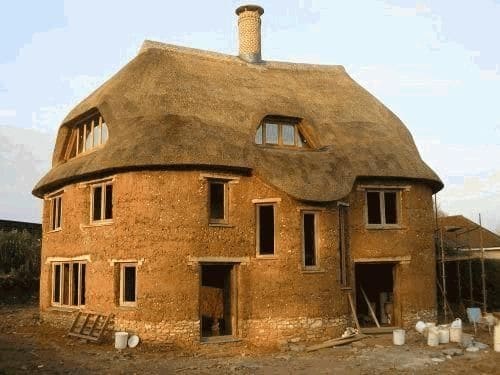
How Much Are Cob Cottages?
Once built, cob cottages are no different to any other type of property. They won’t decrease in value unless, like any other house, there are issues with subsidence or other structural problems.
If they have been built recently they will have been constructed to comply with building regulations. If they are an older property, then you know the house has stood the test of time.
For some kind of guideline, though, let’s look at some cob houses that have recently come on the market.
This year a three-bedroomed detached cob house with a thatched roof in Chilbolton, Hampshire, was on offer for £525,000.
A price tag that is completely in keeping with other properties of that size in the vicinity. Similarly, a semi-detached two-bed cob cottage in Payhembury, Devon, was recently on the market for £300,000.
Again the price reflects the character of the property and the popularity of its rural location.
In terms of running costs, both of these properties were older and so would have the associated costs of that type of property.
The need to re-thatch is something to bear in mind for some older cob-built homes, but that expense is often offset by the efficiency of the insulation which generally requires lower heating costs.
As you can see, though, buying a cob property may not be the cheapest option. If budget is an issue then cob houses are certainly cheaper to build.
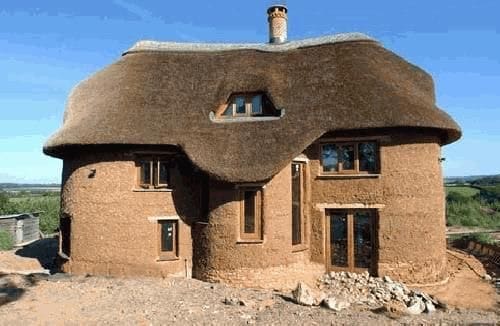
How Much Does it Cost to Build a Cob House In The UK?
While your cob home cost will vary depending on your architectural style and also the site’s geology and weather, here are some of the basics when it comes to considering costs:
Foundations
Drainage
Cob is a soil (or clay and sand), straw and water mixture that is laid wet and allowed to dry and shrink until it is solid. Because of this, it’s essential to make sure the structure remains sound.
A Devonshire proverb states, “that all a cob wants is a good hat and a good pair of shoes”. With that in mind, the key aspect is having solid and well-drained foundations.
Keeping your foundations dry is critical to making sure your cob home is secure.
Groundworks will require care, effort and skill. If drainage is likely to be an issue, a perforated land drain (French drain) could be used to take water away from the base of your building.
To give you an idea of expense 100m perforated land drainage pipe costs between £140-£220 – that’s without installation or labour costs which would be an additional £300-£600.
Rubble Trench
One economical method is having rubble trench foundations. This saves on the costs of concrete and you can use rubble you already have or ask around for some that is going spare.
The cost of buying crushed rubble varies according to materials but is roughly about £35 per tonne.
Be aware, that this type of foundation is obviously not as stable as other methods but might work for smaller cob cottages, especially where drainage is good.
Stem Wall or Plinth
Cob houses need a base on which the cob is placed. Natural stone looks beautiful but the cost is never going to be cheap. As merely one example, Cumbrian Sandstone is about £200 per m².
Even reclaimed stone is expensive. Other options are fired brick which can range upwards of 68p per brick or you can use concrete.
Ready mix concrete is roughly £90 per cubic metre to give you some idea of pricing. As this part of the building will be on display, concrete is the less popular option.
Cob Walls
The cost of cob is largely negligible as the soil is taken from the site or surrounding area. Straw is readily available and can be bought cheaply if you can’t get it for free.
The cost of cob walling is really only a few thousands including wooden lintels for doors or windows.
The ‘cost’ really comes in the patience you will need as each layer of cob needs to be dry before the next is laid. With a rough estimate for the construction of a single-storied building being 13 months, you can see what we mean.
The average estimated build costs of the actual cob work is actually very cheap. An average three-bedroom cob home is roughly 25,000 -£40,000 including labour.
Roof
A thatched roof is the preferred way to top your cob. This is because it is lighter for the walls to bear. Costs range from £15,000 to £50,000 or more. It entirely depends on whether you’re building a pizza oven or a palace.
Labour
Even though the materials used to construct cob houses are very cheap, you have to know what you’re doing with them. If you are a builder, general contractor or craftsperson then these skills can be easily learnt.
A course such as the one run by Edwards Cob Building near Lyme Regis, will give you the fundamentals about building a cob home with a 1-4 day course starting at £200.
If you hire a builder to construct your cob home you will need a specialist so what you save on building materials may be spent on paying an expert for their valuable knowledge.
The most important thing to consider is permission. Always check your local building regulations when considering a new build – cob or otherwise.
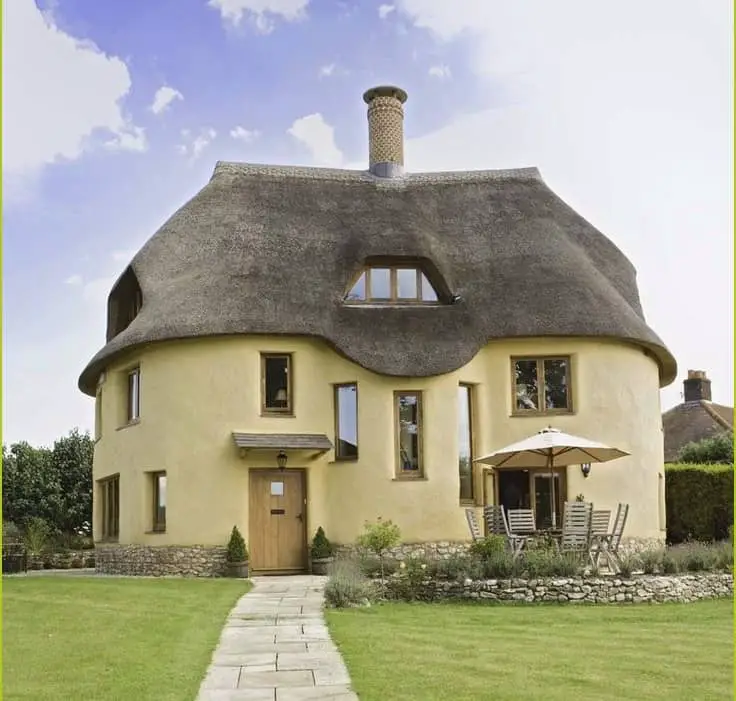
Cob Homes Cost
Fundamentally, a cob home build could cost less than a typical house build and potentially a lot less if you have the ability to self-build.
The savings, however, are more than likely to come in the long-term with far lower energy costs. And as this particular bugbear is firmly in our minds, cob homes certainly seem like the way forward.
What is priceless is the knowledge that by using sustainable methods, natural materials and having an energy-efficient home, you are really building a wonderful legacy for generations to come.
